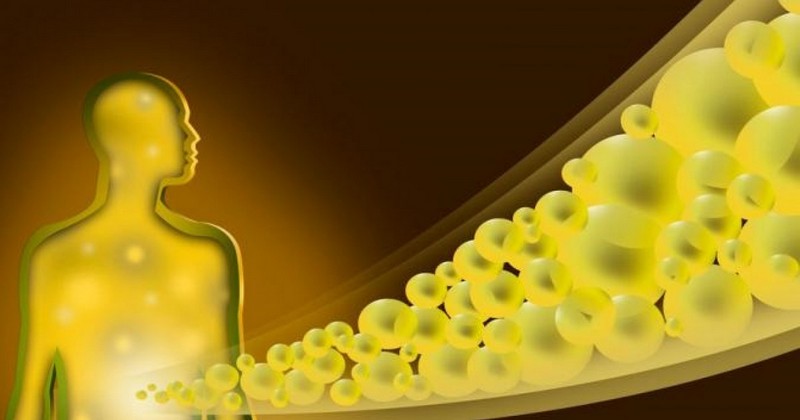High bilirubin (jaundice): causes, symptoms and treatment

When this pigment is produced in excess in our body, it can cause certain disorders.
Our body produces bilirubin naturally. This pigment has important functions but but if it concentrates in excess in the Blood it can cause jaundice and other symptoms..
In this article we will discuss the causes and symptoms of high bilirubin and what treatments are recommended for this condition.
What is bilirubin?
Bilirubin is a yellow pigment produced as a result of the degeneration of hemoglobin, a protein present in blood cells.It is a protein present in red blood cells that transports oxygen between the lungs and other tissues.
Bilirubin acts primarily as a cellular antioxidant; this reduction of oxidation processes causes the cells to wear less. However, the excessive presence of antioxidants can damage the cells.
This pigment is the cause of the color of bruises and feces, as it is eliminated through bile. It also explains the peculiar skin tone of people with jaundice.
A number of beneficial properties are attributed to moderately high levels of bilirubin in addition to cell protection, including a decrease in the risk of atherosclerosis and other cardiovascular diseases.
Types of bilirubin
We can distinguish between two types of bilirubin: direct or conjugated bilirubin and indirect or unconjugated bilirubin. The sum of the values of both types is called "total bilirubin".
Indirect bilirubin is that which has not yet reached the liver, where it will become water-soluble, allowing us to eliminate it through excretions.
Direct bilirubin is produced in the liver from indirect bilirubin. It accumulates in the gallbladder and binds to bile, through which it will be eliminated later.
Normal and high levels
In healthy adults, normal values of total bilirubin are below 1.2 mg/dl (milligrams per deciliter of blood), approximately.
Indirect bilirubin is concentrated in the blood at approximately 0.1 to 0.5 mg/dl, while healthy levels of direct bilirubin are between 0 and 0.3 mg/dl.
Different diseases can cause an increase in the levels of direct or indirect bilirubin in our body, causing various symptoms.causing various symptoms.
Symptoms of hyperbilirubinemia
Bilirubin concentrations above 2 or 2.5 mg/dl of blood can cause jaundice, a term for yellowish pigmentation of the mucous membranes, eyes and skin.
For jaundice to be visible in the skin it is usually necessary for total bilirubin levels to be above 3 mg/dlwhile the whites of the eyes may become yellowish at 2 mg/dl and above. Other frequent symptoms are the darkening of the urine color and, conversely, the acquisition of a pale color by the stool.
We distinguish between conjugated or direct hyperbilirubinemia and unconjugated or indirect hyperbilirubinemia depending on whether the disease that causes it increases one or the other type of bilirubin.
Causes of high bilirubin
Hyperbilirubinemia is usually caused by diseases of different types of bilirubinemia.However, there are also other causes that may be sufficient for it to develop, such as chemotherapy and the use of antipsychotic drugs, among others.
Direct hyperbilirubinemia
The most frequent causes of increased conjugated bilirubin levels are related to liver problems.
- Hepatitisliver cell damage due to inflammation can increase direct bilirubin levels.
- Liver cirrhosisDiseases such as alcoholism or some viruses can cause liver cells to be replaced by scar tissue; severe cirrhosis causes jaundice.
- Gallstones and tumors in the pancreas can obstruct the gallbladder, making it difficult to eliminate bilirubin.
- Dubin Johnson and Rotor Syndromesbenign hereditary diseases that have jaundice as the main symptom.
Indirect hyperbilirubinemia
Some of the most common causes of unconjugated hyperbilirubinemia are:
- Hemolytic anemiaA disorder that causes red blood cells to break down prematurely, increasing bilirubin and "bad cholesterol" levels.
- Gilbert's syndromeGilbert's syndrome: a benign hereditary disease that may cause mild jaundice in periods of stress or if there is general ill health.
- Crigler-Najjar syndromean inherited form of jaundice that can cause brain damage in babies born with it.
Treatment
Treatment of jaundice depends on the disease causing the increased bilirubin. In general, jaundice is cured by strengthening the liver, since many of its causes are determined by liver disorders.
In cases of gallbladder obstruction, surgery is usually required.. The treatment of the rest of the diseases causing hyperbilirubinemia is usually carried out by means of medication.
Beyond these cases, mild jaundice does not usually require treatment in adults. If it causes itching, it can be reduced by using cholestyramine, a drug that helps to eliminate bilirubin.
In newborn infants, where elevated bilirubin levels are common and may be of more concern, jaundice is treated with exchange transfusion and light therapy.
Also, drinking plenty of water, eating fruits and vegetables, and limiting consumption of saturated fats and refined sugars are natural methods of reducing symptoms of jaundice. are natural methods to reduce the symptoms of high bilirubin.
(Updated at Apr 15 / 2024)